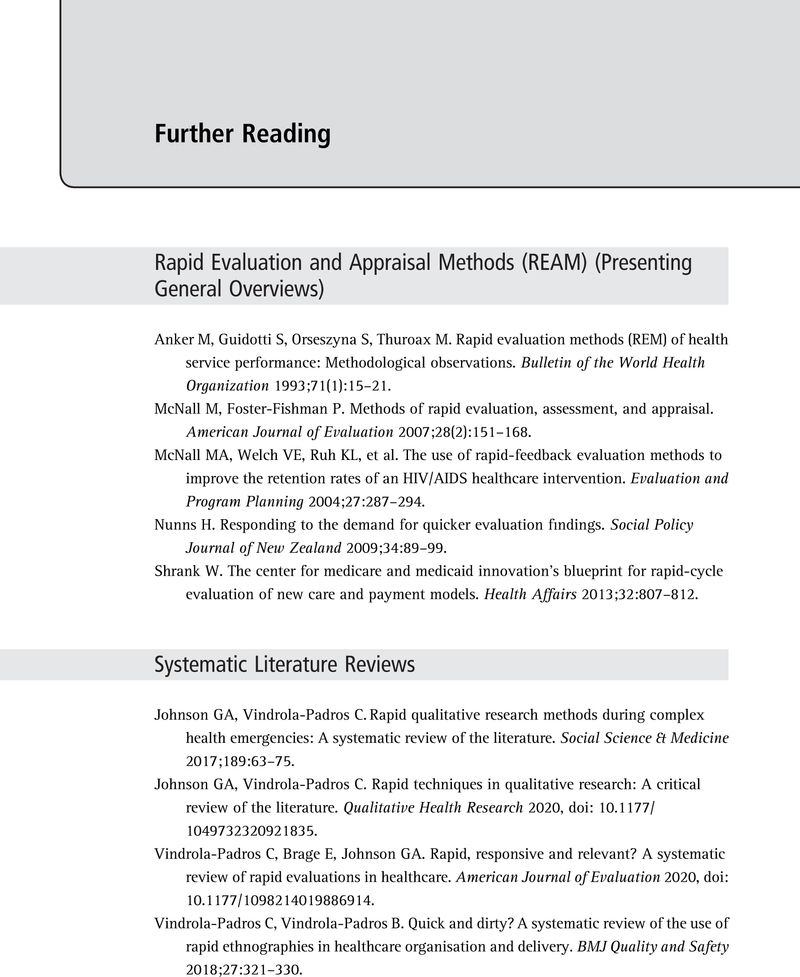Book contents
- Rapid Ethnographies
- Rapid Ethnographies
- Copyright page
- Dedication
- Contents
- Figures and Tables
- Vignettes
- Case Studies
- 1 Introduction
- 2 Key Debates in the Field of Rapid Ethnographies
- 3 A Brief History of the Work Prior to Rapid Ethnographies
- 4 Rapid Ethnographies as a Lone Researcher
- 5 Team-Based Rapid Ethnographies
- 6 Ethics, Practical Considerations and the Emotional Labour of Rapid Ethnographic Fieldwork
- 7 Dissemination and the Use of Findings
- 8 The Future of Rapid Ethnographies
- Book part
- Further Reading
- References
- Index
- References
Further Reading
Published online by Cambridge University Press: 26 November 2020
- Rapid Ethnographies
- Rapid Ethnographies
- Copyright page
- Dedication
- Contents
- Figures and Tables
- Vignettes
- Case Studies
- 1 Introduction
- 2 Key Debates in the Field of Rapid Ethnographies
- 3 A Brief History of the Work Prior to Rapid Ethnographies
- 4 Rapid Ethnographies as a Lone Researcher
- 5 Team-Based Rapid Ethnographies
- 6 Ethics, Practical Considerations and the Emotional Labour of Rapid Ethnographic Fieldwork
- 7 Dissemination and the Use of Findings
- 8 The Future of Rapid Ethnographies
- Book part
- Further Reading
- References
- Index
- References
Summary

- Type
- Chapter
- Information
- Rapid EthnographiesA Practical Guide, pp. 151 - 155Publisher: Cambridge University PressPrint publication year: 2021



